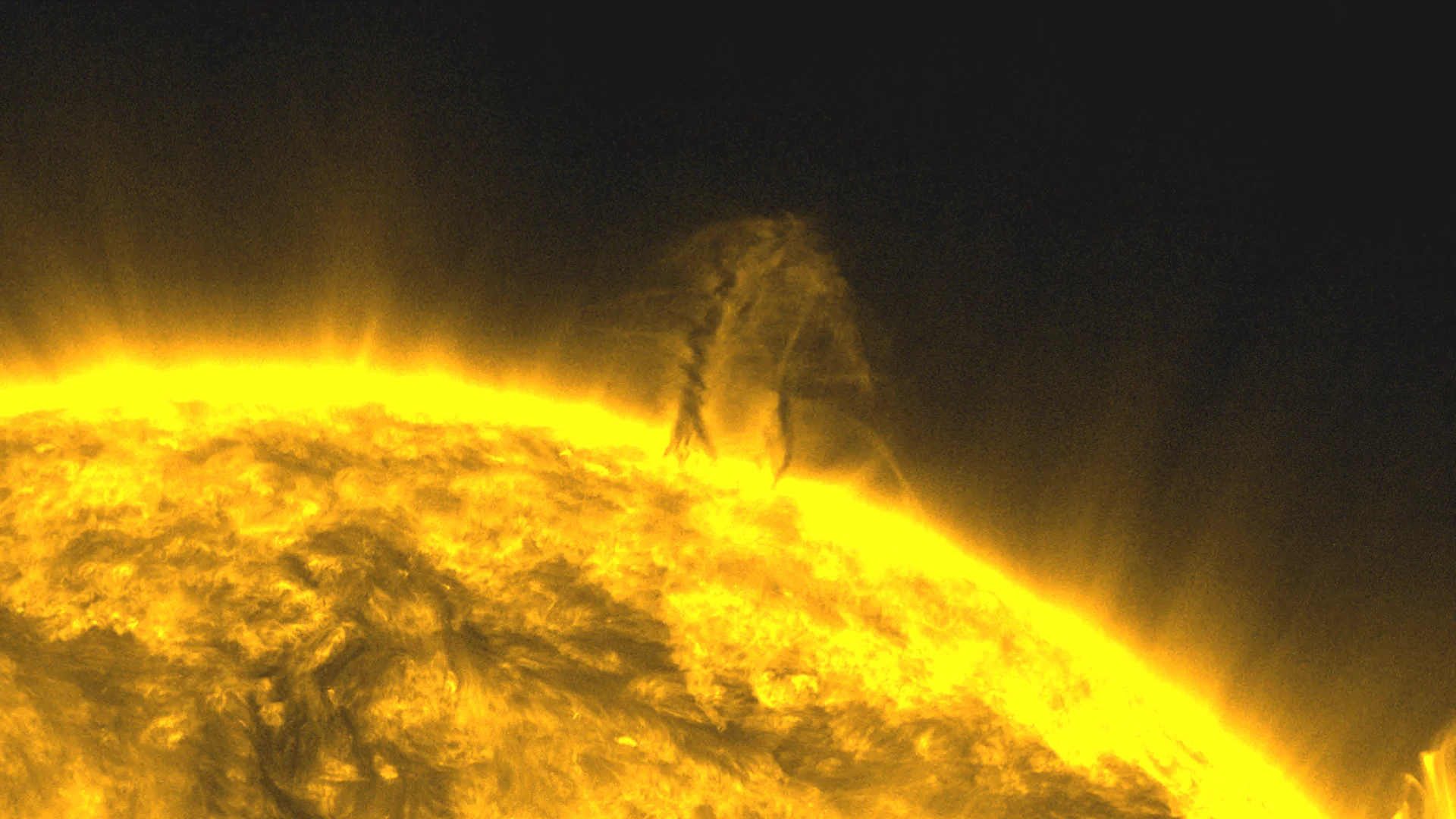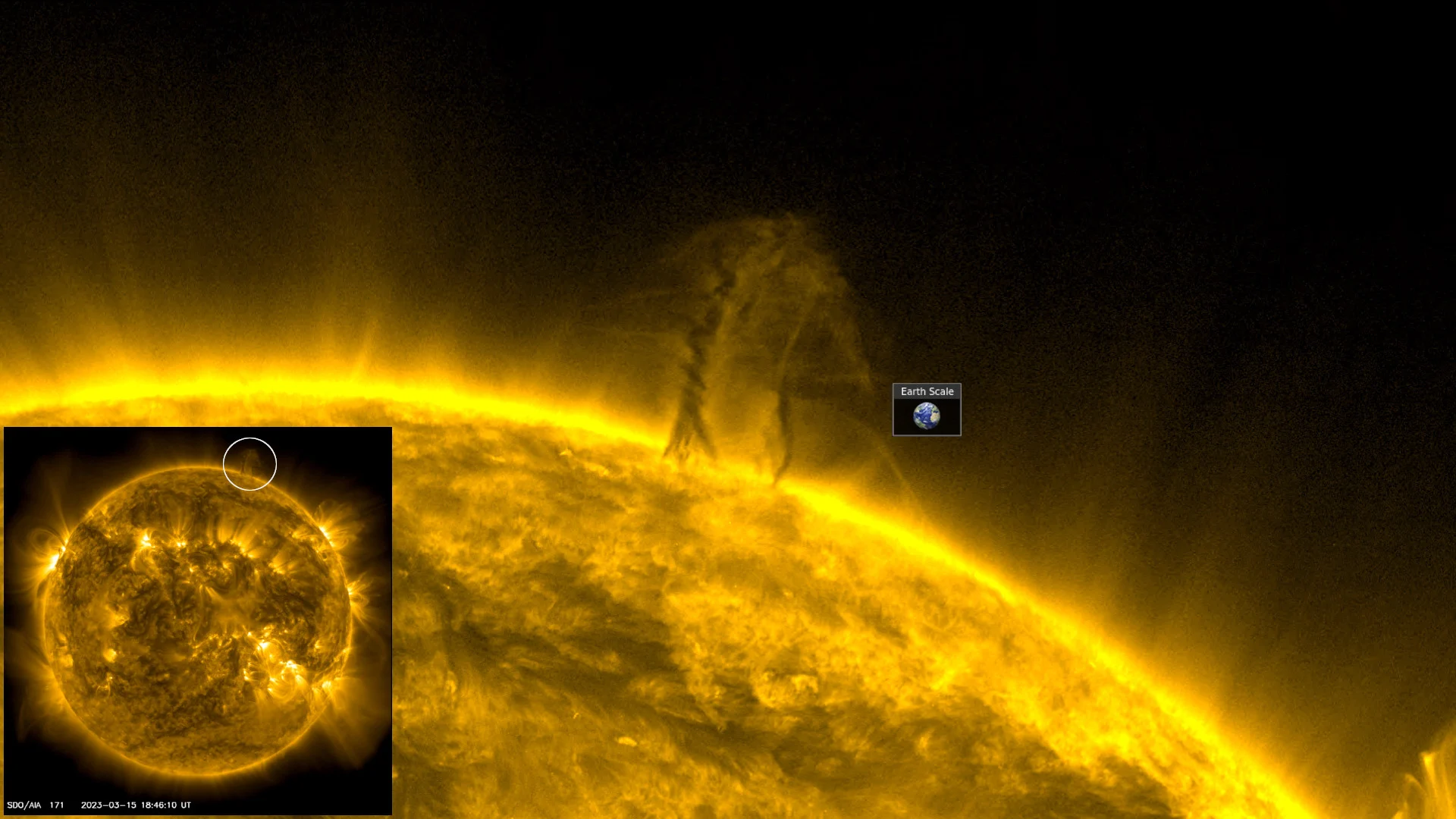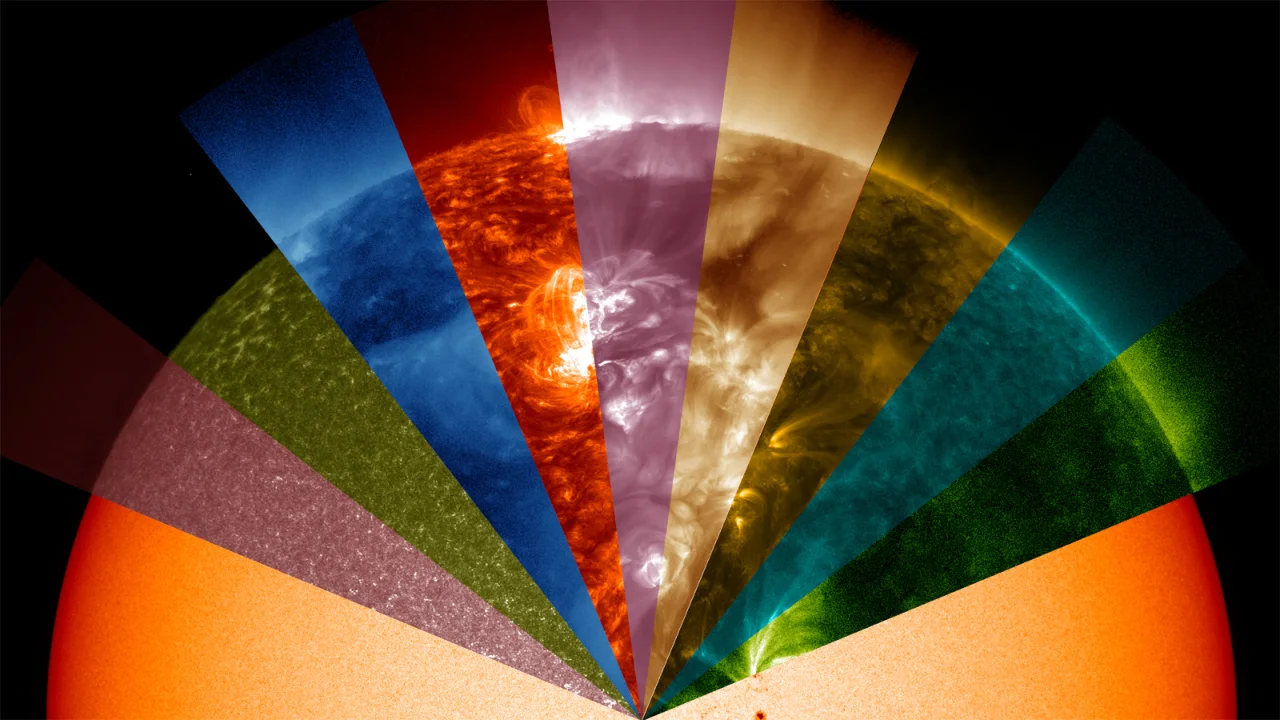
NASA spotted a massive magnetic tornado swirling on the Sun
This massive 'solar twister' spun near the Sun's north pole for over three days!
We've seen some very interesting activity near the Sun's north pole lately.
First there was the immense polar vortex that fascinated solar and space weather scientists in early February. Now, NASA's Solar Dynamics Observatory spied a massive solar tornado, over 10 times taller than the Earth!

This image was captured by SDO's Atmospheric Imaging Assembly (AIA) telescope at 18:46 UTC on March 15, 2023. The main image shows a zoomed in look at an immense filament of solar plasma, twisted up into a tornado swirling above the 'surface'. The inset, lower left, shows a full-disk view of the Sun at the same time, with a small circle noting the location of the 'twister'. A reference image of Earth is included for scale. Credit: NASA/SDO/Scott Sutherland
From the views captured by NASA SDO, this tornado spun up late in the day on March 14 and persisted until early on March 18.
Solar 'prominences' like this form due to powerful magnetic field lines that extend out from the surface of the Sun. Electrically charged solar plasma, which is made up of superheated hydrogen and helium gas, is pulled upwards away from the surface by the magnetic field, where it swirls around the field lines in this tornado-like way. We often see these in the form of "coronal loops"
Watch below: See a closeup view of this massive solar tornado
While the prominence does appear very much like a twister we'd see during severe weather on Earth, it is very likely a full arch of material, streaming out from the surface along a magnetic field loop and joining back up with the surface somewhere else. The reason it looks like a lone spinning vortex may be due to a trick of perspective, as we could be looking at the arch edge-on.
How the Solar Dynamics Observatory takes images of the Sun could also factor in.
Every 12 seconds, SDO takes a snapshot of the Sun, while rotating through a set of filters. Each filter captures a specific wavelength of extreme ultraviolet light, which also corresponds to a specific temperature of solar material. The set of filters was carefully chosen for SDO so that each singles out a region of the Sun (its surface or a part of its atmosphere) and a particular phenomena (such as solar flares or prominences).
For example, according to NASA, the 171 Angstrom filter, used to capture the images above, is especially good at showing coronal loops — the arcs extending off of the Sun where plasma moves along magnetic field lines. The brightest spots in these images are where the magnetic fields near the surface are exceptionally strong. The characteristic temperature of these images is 1 million degrees Kelvin.

This composite image shows a sampling of how NASA's Solar Dynamics Observatory sees the Sun through its different filters. Credit: NASA's Goddard Space Flight Center
However, if you have a prominence that extends far away from the surface, like this one does, the temperature of the material could change as it flows along the magnetic field line. If so, by looking at just one filtered view, only parts of the prominence would show up, while other parts would disappear or show up in a different filtered view.
So, simply due to a difference in temperature, or perhaps due to the contrast between the hot material and the cold, dark space beyond, the top of the loop may be completely invisible.
According to spaceweather.com, when the solar tornado finally gave out, it produced a coronal mass ejection, or CME, that expanded harmlessly out into space.
"This twister finally overtorqued itself," they wrote on their site. "On March 18th it spun out and hurled a cloud of magnetized gas into space. The unraveling debris is flying up from the sun's North Pole and will not hit Earth."











